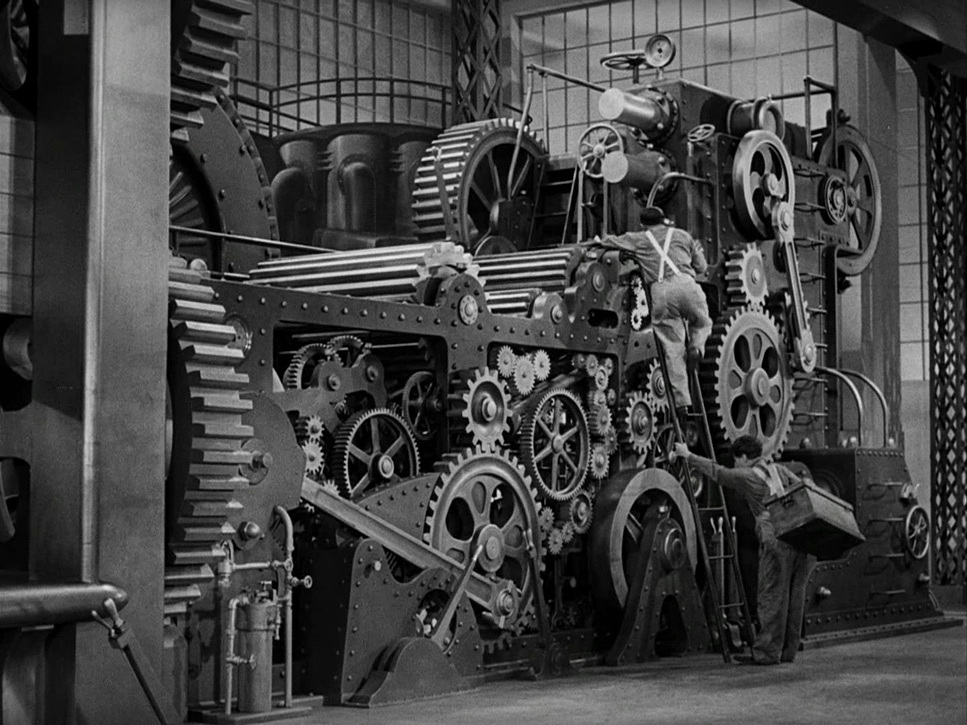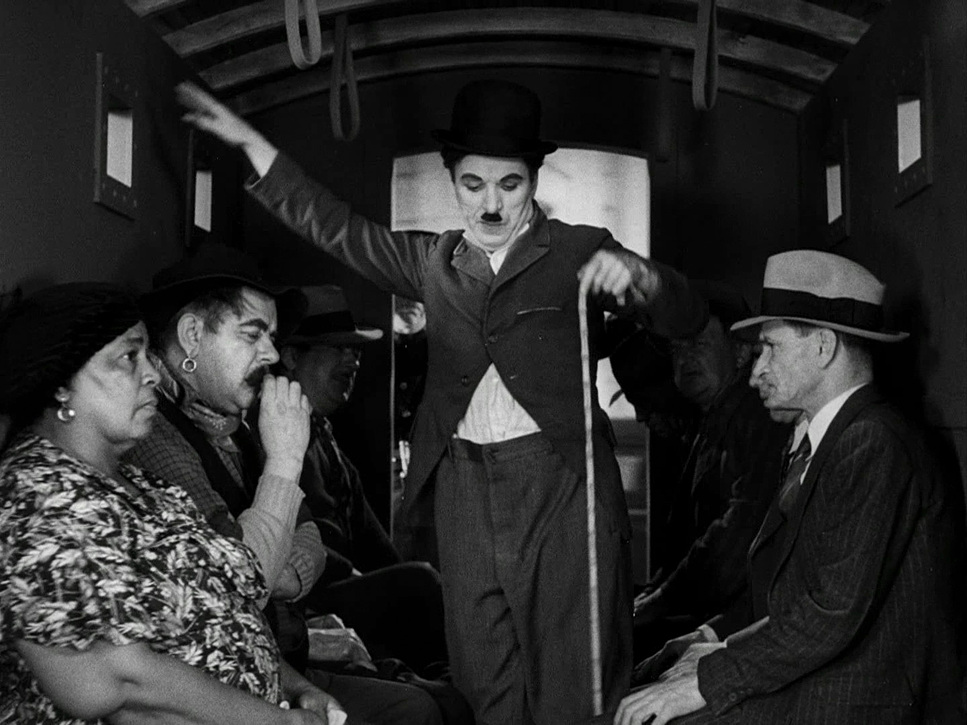I’m Salik Waquas, a filmmaker and full-time colorist with a passion for exploring the intersection of storytelling and visual art. Through my post-production suite, Color Culture, I strive to bring a unique perspective to every project I undertake. As someone deeply invested in the art of cinematography, I find immense joy in analyzing the work of masters and understanding how their craft influences the narrative. Writing about films like Modern Times allows me to connect with cinema on a deeper level and share my insights with others who share my love for the medium.
Modern Times Cinematography Analysis
The cinematography of Modern Times is an extraordinary example of how visuals can shape a film’s narrative, tone, and thematic depth. From the factory floors to intimate moments of connection, every frame is meticulously crafted to reflect Chaplin’s vision of industrial life and humanity’s struggle against it. In this article, I delve into the many layers of the film’s visual storytelling, offering my personal take as a filmmaker and colorist.
About the Cinematographer

The visual brilliance of Modern Times is credited to Roland Totheroh, Chaplin’s longtime collaborator. Their partnership, spanning decades, was rooted in a shared commitment to precision and artistry. While Totheroh brought technical expertise to the table, Chaplin’s micromanaging nature ensured every shot aligned with his vision. The result was a synergy that elevated not just Modern Times, but their entire body of work together.
Chaplin’s influence on the cinematography cannot be overstated. His meticulous involvement shaped the visual language, creating a style that balanced technical mastery with emotional resonance. Totheroh’s ability to adapt and execute Chaplin’s ideas ensured that their collaboration remained a cornerstone of cinematic innovation.
Inspiration for the Cinematography of Modern Times

The film’s visual language draws inspiration from multiple sources. Chaplin’s world tour following City Lights exposed him to the harsh realities of industrialization and the Great Depression. These experiences influenced the film’s portrayal of oppressive machinery and alienated workers.
German Expressionism, particularly its dramatic contrasts and stylized visuals, also left its mark. Fritz Lang’s Metropolis is an unmistakable influence, especially in the factory scenes, where mechanical precision dominates. Similarly, industrial photography from the 1920s shaped the film’s stark depiction of factory life, marrying realism with the heightened reality of Chaplin’s humor.
Camera Movements Used in Modern Times

Despite being a product of the sound era, Modern Times relies on restrained yet purposeful camera movements, reflecting Chaplin’s preference for simplicity. The camera is often static, particularly in factory sequences, emphasizing monotony and entrapment. When movement does occur, it enhances the narrative.
One unforgettable sequence follows the Tramp as he is swallowed by a machine. The camera tracks his descent into the gears with claustrophobic precision, heightening the absurdity and tension. Similarly, in the roller-skating scene, smooth tracking shots capture the Tramp’s grace and humor, showcasing Chaplin’s unparalleled physical comedy. These movements are not just technical choices but integral to the storytelling, amplifying both the humor and the pathos.
Compositions in Modern Times

The compositions in Modern Times are masterclasses in storytelling. Wide shots dominate the factory scenes, dwarfing the Tramp against imposing machinery. This visual contrast underscores his insignificance in the industrial landscape, reinforcing the film’s critique of dehumanization.
Symmetry plays a significant role, particularly in the assembly line scenes, where perfectly aligned machinery reflects the rigidity of industrial life. In contrast, moments shared with the Gamine are framed more fluidly, emphasizing warmth and human connection. One of the most iconic compositions—the Tramp and the Gamine walking hand-in-hand toward the horizon—symbolizes hope and resilience, a recurring theme in Chaplin’s work.
Lighting Style of Modern Times

Lighting in Modern Times oscillates between high contrast and soft naturalism, serving the dual purpose of narrative and symbolism. The factory sequences feature harsh, directional lighting that casts long shadows, evoking the oppressive atmosphere of mechanized labor. Shadows from machinery loom large, creating a sense of entrapment.
Conversely, outdoor and romantic scenes employ softer, diffused lighting, reflecting warmth and humanity. This deliberate shift in lighting style reinforces the divide between the cold, industrial world and moments of personal connection. Practical lights—factory bulbs, streetlights—enhance the film’s realism while contributing to its visual storytelling.
Lensing and Blocking in Modern Times
Wide-angle lenses play a crucial role in emphasizing scale and perspective, particularly in the factory scenes. These lenses exaggerate the size of the machinery, making the Tramp appear smaller and more vulnerable. Medium and close-up shots are reserved for comedic or emotional moments, drawing attention to Chaplin’s expressive performance.
Blocking is another standout element, choreographed with precision to serve both comedic and thematic purposes. In the factory scenes, the synchronization between the Tramp’s chaotic movements and the mechanical rhythm of the machines creates a visual harmony that mirrors the industrial monotony. Intimate scenes with the Gamine, on the other hand, feature looser, more natural blocking, reflecting their organic bond.
Color of Modern Times

Though black and white, Modern Times uses tonal contrast to remarkable effect. The interplay between light and shadow creates a dynamic visual language that conveys mood and meaning. The metallic sheen of the factory interiors contrasts with the softer tones of nature, symbolizing the clash between industrialization and humanity.
Costuming also contributes to this visual dichotomy. The Tramp’s iconic outfit—quirky and endearing—stands out against the sterile backdrop of the factory, reinforcing his status as an outsider. These deliberate choices imbue the film with a depth that transcends its monochromatic palette.
Technical Aspects of Modern Times
The film’s technical execution showcases Chaplin’s innovation. While largely silent, Modern Times incorporates sound creatively. Mechanical noises and gibberish satire the spoken-word format, blending silent and sound cinema.
The factory sets, designed by Charles Danny Hall, are marvels of practicality and illusion. Materials like rubber and wood mimic steel, creating realistic yet manageable machinery. The use of practical effects, such as the feeding machine, adds authenticity to the absurdity.
Chaplin’s collaboration with composer Alfred Newman results in a score that enhances the film’s emotional beats. The music seamlessly transitions between playful and melancholic, perfectly complementing the visuals.
Conclusion
As a filmmaker and colorist, I am continually inspired by Modern Times and its extraordinary cinematography. Every frame, movement, and lighting choice reflects the genius of Chaplin and Totheroh’s collaboration. The film’s visual language not only tells a story but also critiques the societal challenges of its time.
Decades after its release, Modern Times remains a timeless masterpiece, blending humor, heart, and technical innovation. Its cinematography is a testament to the power of visual storytelling—a lesson I carry into my own work, striving to honor the legacy of filmmakers who came before me.
- Also Read: CINEMATOGRAPHY ANALYSIS OF HEREDITARY (IN DEPTH)
- Also Read: CINEMATOGRAPHY ANALYSIS OF HER (IN DEPTH)